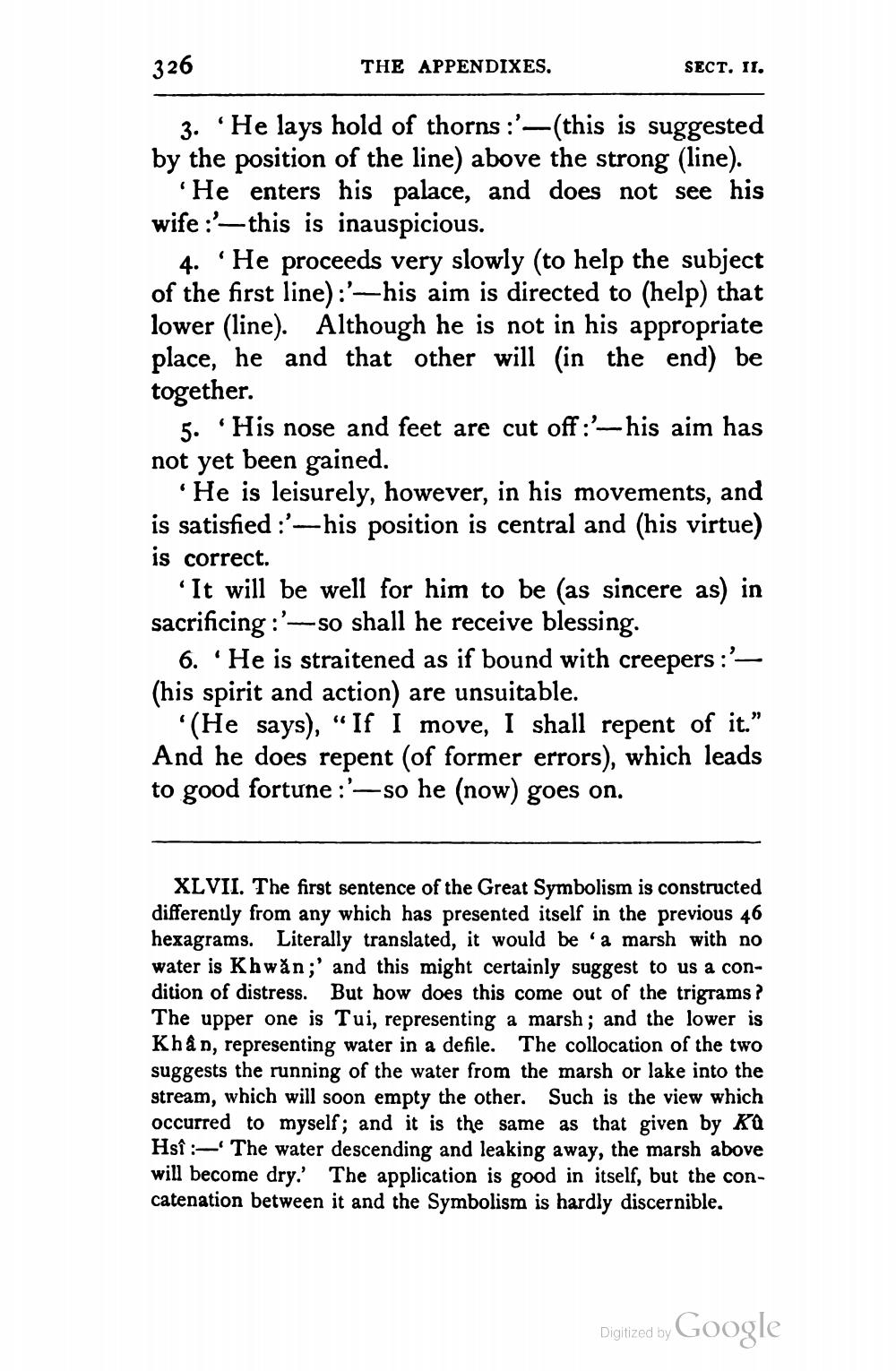________________
326
THE APPENDIXES.
SECT. II.
3. He lays hold of thorns :'-(this is suggested by the position of the line) above the strong (line).
He enters his palace, and does not see his wife ::-- this is inauspicious.
4. 'He proceeds very slowly (to help the subject of the first line):'-his aim is directed to (help) that lower (line). Although he is not in his appropriate place, he and that other will in the end) be together.
5. His nose and feet are cut off :'-his aim has not yet been gained.
'He is leisurely, however, in his movements, and is satisfied :'-his position is central and (his virtue) is correct.
'It will be well for him to be (as sincere as) in sacrificing :'--so shall he receive blessing.
6. He is straitened as if bound with creepers :'(his spirit and action) are unsuitable.
'(He says), “If I move, I shall repent of it." And he does repent (of former errors), which leads to good fortune :'—so he (now) goes on.
XLVII. The first sentence of the Great Symbolism is constructed differently from any which has presented itself in the previous 46 hexagrams. Literally translated, it would be 'a marsh with no water is Khwan;' and this might certainly suggest to us a condition of distress. But how does this come out of the trigrams? The upper one is Tui, representing a marsh; and the lower is Khả n, representing water in a defile. The collocation of the two suggests the running of the water from the marsh or lake into the stream, which will soon empty the other. Such is the view which occurred to myself; and it is the same as that given by Ka Hsî :- The water descending and leaking away, the marsh above will become dry. The application is good in itself, but the concatenation between it and the Symbolism is hardly discernible.
Digitized by Google




